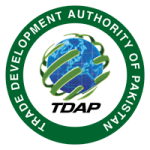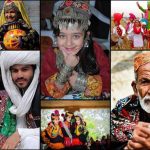Trade Development Authority of Pakistan (TDAP)
+92-21-99225833 | [email protected]
Travel Guide
Pakistan covers 881,913 km2 (307,374 sq mi), approximately equaling the combined land areas of France and the United Kingdom. Its eastern regions are located on the Indian tectonic plate and the western and northern regions on the Iranian plateau and Eurasian land plate. Apart from the 1,046 km (650 mi) Arabian Sea coastline, Pakistan’s land borders total 6,774 km (4,209 mi)—2,430 km (1,510 mi) with Afghanistan to the northwest, 523 km (325 mi) with China to the northeast, 2,912 km (1,809 mi) with India to the east and 909 km (565 mi) with Iran to the southwest.
The northern and western highlands of Pakistan contain the towering Karakoram and Pamir mountain ranges, which incorporate some of the world’s highest peaks, including K2 (8,611 m/28,251 ft) and Nanga Parbat (8,126 m/26,660 ft). The Balochistan Plateau lies to the West, and the Thar Desert in the East. An expanse of alluvial plains lies in Punjab and Sindh along the Indus river. The 1,609 km (1,000 mi) Indus River and its tributaries flow through the country from the Kashmir region to the Arabian Sea.
Quick Facts
Economy
Pakistan has a semi-industrialized economy. The growth poles of the Pakistani economy are situated along the Indus River. Diversified economies of Karachi and Punjab’s urban centers, coexist with lesser developed areas in other parts of the country. Despite being a very poor country in 1947, Pakistan’s economic growth rate has been better than the global average during the subsequent four decades, but imprudent policies led to a slowdown in the late 1990s. Recently, wide-ranging economic reforms have resulted in a stronger economic outlook and accelerated growth especially in the manufacturing and financial services sectors. Since the 1990s, there has been great improvement in the foreign exchange position and rapid growth in hard currency reserves.
The 2005 estimate of foreign debt was close to US$40 billion. However, this has decreased in recent years with assistance from the International Monetary Fund and significant debt-relief from the United States. Pakistan’s gross domestic product, as measured by purchasing power parity, is estimated to be $475.4 billion while its per capita income stands at $2,942. The poverty rate in Pakistan is estimated to be between 23% and 28%.
Demographics
The estimated population of Pakistan in 2010 was over 170 million making it the world’s sixth most-populous country, behind Brazil and ahead of Russia. The population growth rate now stands at 1.6 % . The majority of southern Pakistan’s population lives along the Indus River. By population size, Karachi is the largest city of Pakistan. In the northern half, most of the population live in an arc formed by the cities of Lahore, Faisalabad, Rawalpindi, Islamabad, Gujranwala, Sialkot, Gujrat, Jhelum, Sargodha and Sheikhupura.
Life expectancy at birth is 63 years for females and 62 years for males as of compared to the healthy life expectancy at birth which was 54 years for males and 52 years for females in 2003. Expenditure on health was at 2% of the GDP. The mortality below 5 was at 97 per 1,000 live births. During 1990–2003, Pakistan sustained its historical lead as the most urbanized nation in South Asia, with city dwellers making up 36% of its population. Furthermore, 50% of Pakistanis now reside in towns of 5,000 people or more.
Society and Culture
Contact Us
Trade Development Authority of Pakistan 5th Floor, Block A, Finance & Trade Centre P.O. Box No. 1293, Shahrah-e-Faisal, Karachi 75200 Pakistan.
Related Links
- Ministry of Commerce
- Special Investment Facilitation Council
- The Federation of Pakistan Chambers of Commerce & Industry
- Pakistan Bureau of Statistics
- Ministry of Foreign Affairs
- Pakistan Standards & Quality Control Authority
- Federal Board of Revenue
- State Bank of Pakistan
- National Tariff Commission
- Trade Dispute Resolution Organisation
- Trade Map
- Pakistan Single Window
- Pakistan National Accreditation Council
- UN Sanctions SROs (MOFA)



